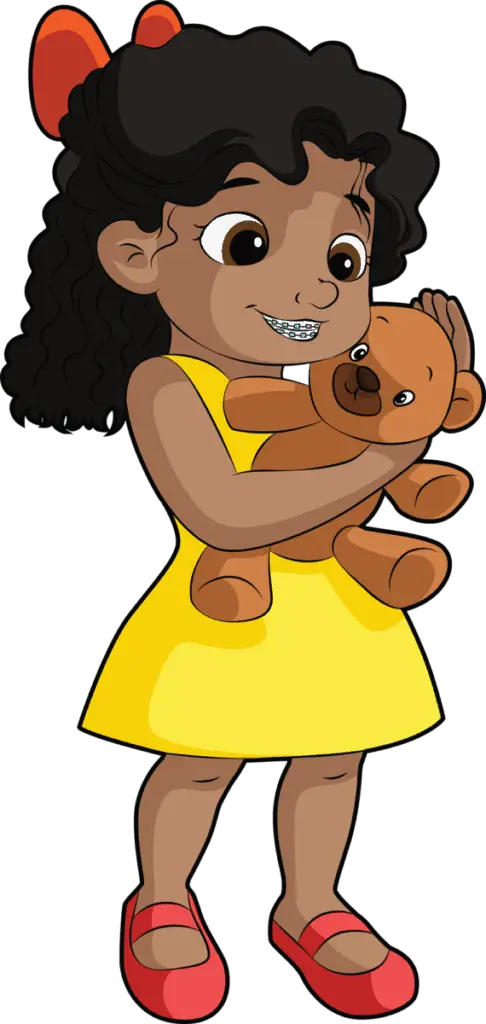
It’s always a nice surprise when your toddler or child sneaks in an especially sweet hug. You’re busy with so much and trying to anticipate their every need, but all that anxiety just fades away the second they give you a little squeeze.
Before children become verbally expressive, touch is how they express and receive affection. It is not harmful if your child is overtly affectionate. Yet, it is important that they learn to respect personal boundaries and express their affection in a situationally appropriate and healthy way.
It’s likely that in the above example that child understands the personal boundaries their parent has modeled and he or she is mimicking what they have experienced. It is completely appropriate for a child to give a parent, other family member, or friend a hug right away, but less so a random stranger behind you in the grocery checkout line.
Contents
How Can I Help My Overly Affectionate Child?
According to Fatherly, a digital parenting and lifestyle brand, it’s important to react positively even when your child crosses another’s boundary and use it as a teachable moment.
“The one thing you don’t want to do is make your child feel that being close and sharing affection with other people is not a good thing.”
Source: Dolan-Del Vecchio,
Try not to lean into a harsh correction, but instead encourage your child to learn the other person’s boundaries first. If they have already communicated to your child that a hug upon first meeting is fine, and your child is operating with that knowledge, that is a step in the right direction.
However, your child should be taught not to hug anyone without consent. For example, you can say to your child upon meeting a playmate, “would you like to give each other a hug?” This way both children know it is acceptable and you can model the hug appropriately.
Another way for you to teach your child about appropriate displays of affection is to show him or her. When you meet up with your good friend or family member, you can demonstrate the proper way to hug in this instance. It may seem unnecessary but humans learn by showing and for your young child, this is an example of a teachable moment.
How Can I Model Good Boundaries?
To learn more about setting boundaries, let’s dig deeper to how you can model healthy behavior!
Most adults model good personal boundaries without even thinking about it, but that’s partly because they’ve spent many years socializing, picking up on nuance.
Children are operating right out the gate with not a lot of life behind them to compare to. They tend to look to surrounding adults for guidance. After all this is how they learn language, rules, and other social norms.
Think about all the different ways you express affection and communicate with the range of people in your life. You treat bumping into an old friend at the grocery store with an enthusiastic hug, but probably just offer a friendly smile and wave to your favorite barista.
Let’s say your spouse goes on a business trip. When he comes home, you welcome him with open arms. However, if he’s just walking in after a day of work, more than likely you smile and just say ‘how was your day?’, right?
If the grandparents visit once a year, you anticipate the arrival with fanfare and demonstrate to your kids how much you all miss ‘Oma’ and ‘Opa’ with group hugs and laughter. If you Skype with them once a week, you probably don’t use emotional affectionate language upon saying hello.
These demonstrations help your children learn appropriate, healthy examples of affection, both physical and verbal.
By being consistent in your social actions with others, your child will start to pick up on what is generally acceptable behavior, especially as it relates to expressing affection.

It’s also important to take a moment to address overly affectionate parents.
Can you hug your child too much?
The simple answer is yes! Parents who hover and are too affectionate, too controlling of their children are called helicopter parents. Studies show that this is quite detrimental to a child’s development.
If you would like a good resource in how to set proper boundaries with kids from and early age on, this book is a great resource and can be found here on Amazon.
3 Ways to Guide An Overly Affectionate Child
Below are some methods and tips if you are raising a child who is affectionate. Use these as a framework on how to guide your children and oversee their progress in understanding and giving appropriate affection.
Know What They Are Watching
Children are modeling the behavior they see, and the more they see a certain behavior, the more they will want to replicate it. That is why it is so important to be aware of the different types of media that your child is consuming.
Real life example: we ended up implementing a rule that our youngest son could not watch any shows with real people, only cartoon characters.
This included all ‘kid-friendly’ shows on Disney and Nickelodeon. Most of these programs depict children acting like adults, even if in mild situations. The children run around without supervision, as if parents are background (rarely seen and hardly heard!).
When adults are included in the shows, they act like imbeciles. The kids rolls their eyes, talk back, and ‘solve’ any problems on their own. Not surprisingly our young son began acting like his favorite characters, and using language and expressions NOT respectful to adults.
Likewise, if children are consistently watching something directed to an audience well above their age group, it is likely they will try to model the behaviors seen in the show. They won’t have the right context to understand that this behavior isn’t appropriate for the settings kids normally find themselves in, like the playground or the classroom.
This seems obvious until you realize how easy it is for children to stumble onto videos and other media that are just not meant for them. If your children like to watch videos on a mobile phone or tablet, make sure you understand the app or channel’s parental guidelines. Better yet, watch it with them by putting it on the big screen.
You really need to know what your child is watching!
At the least, make sure you know what content is available on that channel before handing over the device to your child, so they do not consume any media that is not appropriate for them.
If you would like to learn more about how we ensured that our kids always showed the proper respect to us and other adults, read here about how we used ‘yes sir’ and ‘yes ma’am’ to do it.
Enforce Boundaries, Teach Respect
As stated above, it is important to not discourage your child from expressing affection. Reacting too strongly when they cross a boundary might startle them, and they could make the association that touching and being close with others is wrong.
Instead, prompt an exchange between your child and who they are expressing affection for. If they are quick to hug a classmate or friend without checking in with them first, this could also leave them with a negative reaction.
Explain that not all kids want to be hugged as often as they do, and that is okay. The point is to learn someone else’s boundaries and preferences before going for a hug.
In most cases, as children age, hugs become less appropriate for the situation. Instead older kids do fist bumps or just simply say, ‘hey.’
When your child learns how another would like to express or receive affection, they will be more likely to respond or initiate affection mindfully. For example, it might be totally acceptable for members of your family to roughhouse while playing outside.
Your family members, over time, have established that is okay with the following boundaries in mind: no hitting or slapping, avoid hitting someone in the face and/or eyes, or basically, any action that would cause marks or injury.
Your child, innocently, may try to replicate that behavior with a classmate on the playground. It makes sense to your child that this is how to have fun and bond with others, just like the silly football game they had with their cousins on the front lawn this past Thanksgiving.
However, it’s not guaranteed that this classmate will respond to this behavior the same way, so teach your child to check in with others before assuming that is how they also play and show affection. And of course, the context matters because in some environments, ‘rough play’ is a Big No No such as at church or school.
Get to Talking

Now that you know checking in with others is something your child needs to do before expressing affection, the next question you may have is how exactly to talk about it constructively.
Again, if your overly affectionate child initiates a hug with an acquaintance or someone, try not to rush in and break up the hug. Instead, ask them, “That was so nice of you, but do we know for sure that’s how they’d like to be greeted? Let’s ask first.”
This approach works best if you have already introduced the idea that a conversation or some kind of agreement is needed before expressing affection. This can also help bridge to a larger discussion around physical agency and how your child can comfortably establish and grow into good personal boundaries.
A natural place to start with this is with extended family and friends. Sometimes children will act extremely shy or avoidant of a new, unfamiliar friend or acquaintance of the family at a larger, more overwhelming gathering.
Forcing that child to hug or embrace someone they are not familiar with because you feel it would be nice is undermining the child’s boundaries and sense of agency, but more on that later!
Safety Precautions
Teaching your child to not unwillingly put themselves into danger should be a major priority as they grow into their social skills. Be sure to help them understand what is appropriate touch and what is not. Should they experience something that made them uncomfortable, encourage them to say something to someone they can trust.
That line of communication can keep your child safe and start to teach them more about their sense of agency. Having a clear distinction between what affection is appropriate and from whom will not only contribute to their greater social understanding but keep them out of harm’s way.
How Can I Encourage My Overly Affectionate Child?
It’s tough to fight that initial reaction to fawn over your child offering affection to another. It’s usually unexpected and can inject levity into any random moment. However, be sure to watch this reaction in yourself and other adults.
Children who get used to this immediate praise and attention might start to seek it out. This makes the affection less genuine and more like a performance. Children begin to associate their actions as opportunities to be noticed and celebrated, as opposed to expressing their feelings of closeness to another.
Wrapping Up Affectionate Child
Overall, it’s totally normal and healthy for your child to want to express affection, especially physically, with their friends and family. In fact, not expressing any affection would be quite concerning.
With good boundaries, a sense of self, and awareness of other’s preferences, children can grow into empathetic humans with healthy social skills.
